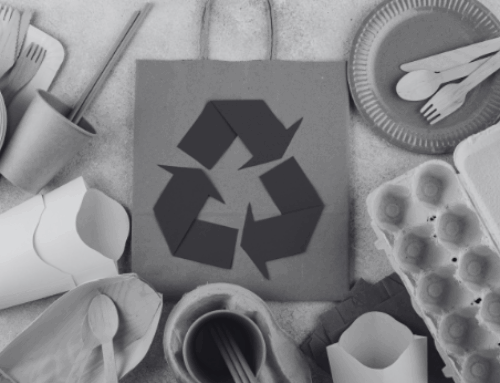Wellness means different things to different people. For some, it’s hitting the gym at 5 am. For others, it’s quiet time with family, unplugging on a Sunday, or finally seeing a therapist. In South Africa, this diversity is especially true when we zoom in on different age groups—from Gen Z to Baby Boomers.
Recent data from YouGov Profiles offers a fascinating snapshot of how South Africans of all ages approach lifestyle and everyday wellness. While the priorities might shift across generations, one thing is clear: wellness is no longer a luxury; it’s a lifestyle expectation.
Let’s dive into the emerging trends, generational differences, and what they reveal about the future of wellness in South Africa.
1. A Snapshot of Generational Wellness in South Africa
The YouGov dataset breaks down opinions and habits across generational cohorts:
- Gen Z (18–27)
- Millennials (27–43)
- Gen X (43–59)
- Boomers (60-78)
Each generation comes with its own lived experiences, from growing up online to navigating post-apartheid adulthood, which naturally impacts how they view health, balance, and self-care.
This generational lens helps brands, educators, and policymakers better understand not just what wellness looks like, but how to deliver it meaningfully across life stages.
2. Physical Wellness: Shared Priority, Different Goals
Across the board, 74% of South Africans say they prioritise their physical well-being. But how that shows up in daily life differs significantly between age groups.
- Gen Z and Millennials often link wellness to body image, gym culture, and influencer trends. They’re more likely to engage with fitness challenges, use supplements, or follow plant-based diets based on social influence.
- Gen X and Boomers, on the other hand, tend to focus on preventative health. Regular medical checkups, steady routines, and low-impact activities (like walking or swimming) are more common.
Consumer Insight:
While everyone wants to “feel good”, Gen Z wants to look good while doing it. Boomers want to live longer with fewer complications. Both goals are valid and can be supported, but require distinct messaging, tone and platform strategy.
Strategic Tip:
Wellness campaigns should be segmented based on life stage. One size doesn’t fit all anymore.
3. Mental Wellness: A Generational Awakening
If there’s one area where generational contrast is most visible, it’s mental health.
Younger South Africans, particularly 63% of the Gen Z population, actively prioritise their mental well-being and are leading the charge in destigmatising therapy, discussing anxiety, and normalising stress as part of the human condition.
Millennials also show strong engagement, often seeking a work-life balance that supports their emotional well-being.
Meanwhile, Gen X and Boomers appear more private or reserved about mental health. But don’t mistake that for a lack of need. Economic stress, retirement worries, and isolation still impact older adults—many just don’t talk about it as openly.
Consumer Insight:
The rise in emotional transparency among youth is reshaping how the entire country talks about well-being. Older generations are listening, even if they’re not quite ready to speak up.
Strategic Tip:
Create safe, cross-generational spaces—both online and in communities—where mental health is de-stigmatised. Use trusted voices for Boomers, and relatable content for Gen Z.
4. Digital Tools & Wellness Tech: The Generational Divide
In a digitally connected South Africa, how we manage wellness is increasingly tech-driven. But here’s where usage patterns shift:
Gen Z are leading a new era of wellness, one that embraces proactivity, digital exploration, and self-care. While this dataset doesn’t measure specific app or platform use, it highlights that younger generations are consistently more engaged with wellness behaviours overall. In contrast, Gen X respondents show a more reserved approach to wellness, reflecting a generational gap in how mental and physical health is prioritised.
Notably, while younger people are more likely to try new platforms, they also experience digital burnout. Conversely, Boomers might resist apps, but they value simplicity and consistency when onboarded properly.
Consumer Insight:
Digital wellness solutions must be easy, accessible, and relevant to each generation’s habits.
Strategic Tip:
Prioritise UX for older users, and community/social gamification for younger ones. Don’t assume one app fits all.
5. Social Wellness & Community: Stronger Than You Think
Wellness isn’t just internal. It’s also about how people feel with others, in their homes, circles, churches, or online communities.
- 71% Boomers are more likely to define wellness through family time, spirituality, and community belonging.
- Gen Z and Millennials place high value on friendships, chosen families, and even online support communities.
- Gen X, sandwiched between aging parents and growing children, tend to prioritise responsibility and routine stability.
Consumer Insight:
Social connection is central to everyday wellness. The source of that connection varies, but the emotional need is universal.
Strategic Tip:
Build content or campaigns that speak to group identity, shared wellness goals, or community contribution—whether through spirituality, sport, or social circles.
6. What Brands & Policymakers Need to Know
South Africans are redefining wellness in bold, deeply personal ways. The generational breakdown makes it clear that brands and health leaders can no longer rely on blanket solutions.
Here’s what matters most:
- Cultural relevance. Wellness must reflect SA’s rich diversity, across language, tradition, and belief.
- Age-specific strategies. A Gen Z TikTok ad won’t reach a Boomer, and vice versa.
- Accessible pricing. 55% of South Africans cite cost as a barrier to maintaining their health and well-being.
- Trustworthy voices. Peer influence works better than hard sales, especially in mental health and diet culture.
7. Final Thoughts: The Future of Wellness Is Personal
Wellness isn’t a one-time event or a January resolution—it’s part of how South Africans are choosing to live. And as life stages evolve, so too do wellness priorities.
55% of South Africans cite cost as a barrier to maintaining their health and well-being, a signal that affordability remains a key obstacle. For brands and health leaders, this presents both a challenge and an opportunity: to create more accessible, cost-sensitive wellness solutions that meet people where they are.
Methodology
YouGov Profiles is a segmentation and media planning tool. With data collected daily, it provides a comprehensive view of consumers’ worlds.
Dataset: 2025-05-25
Population: South African adults with access to the internet, aged 18+
Sample sizes: Gen Z (ages 18–27) n~563; Millennials (ages 27–43) n~758; Generation X (ages 43–59) n~276; Baby Boomers (ages 60-78) n~87



